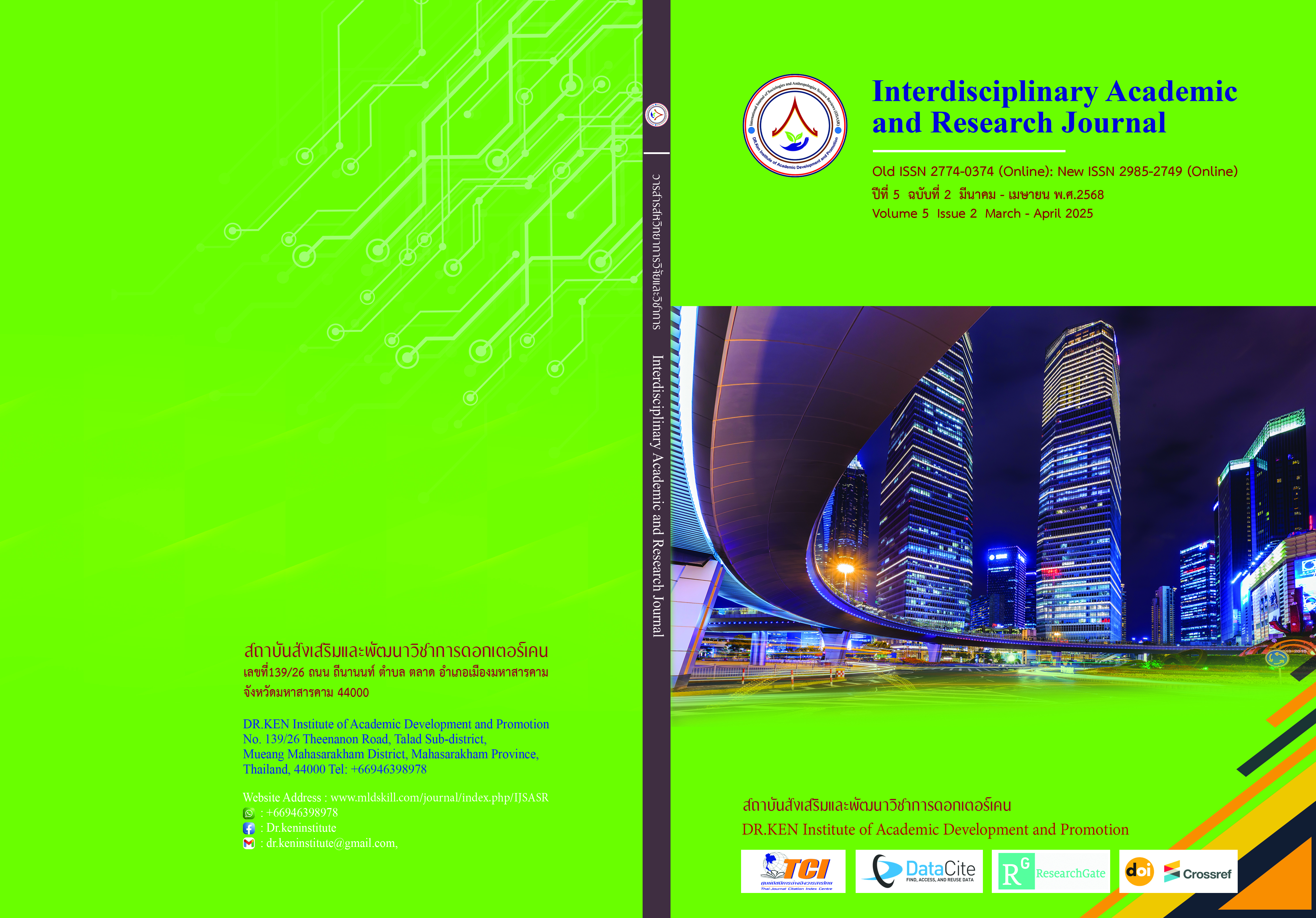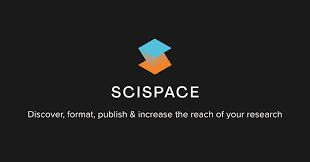A Study of Learning Outcomes on Fun with Lab on Substances and Changes Learning Unit Creative Thinking and Scientific Mind of the Grade 5 Students using STEAM Education with Graphic Organizer
Keywords:
STEAM Education, Graphic Organizer, Learning Outcomes, Creativity Thinking, Scientific MindAbstract
Background and Aims: STEAM Education is an integrated learning management Science and Technology, Engineering, Arts, and Mathematics, all of which aim to enhance learners' skills in problem-solving and product development. The purposes of this research were to 1) study learning outcomes on Fun with Lab on Substances and Changes us Learning Unit using STEAM education with Graphic Organizer on the following 1.1) compare learning achievement before and after learning using STEAM education with Graphic Organizer 1.2) compare learning achievement after learning using STEAM education with Graphic Organizer and the 70 percent criterion 1.3) compare the quality of the work after learning using STEAM education with Graphic Organizer and the 70 percent criterion 2) compare creative thinking before and after learning using STEAM education with Graphic Organizer 3) compare scientific mind before and after learning using STEAM education with Graphic Organizer.
Methodology: This research sample consisted of 43 grade 5/2 students. The research instruments consisted of lesson plans, an achievement test, a quality of work learning test, a creativity assessment test, and a scientific mind assessment test. The percentage, mean, and standard deviation of independent items and the t-test were used to analyze the data.
Results: The result findings showed that: 1) study of learning outcomes as the following 1.1) learning achievement after learning was significantly higher than before learning at the .05 level 1.2) learning achievement after learning was significantly higher than the 70 percent criteria at the .05 level 1.3) Task performance after learning was significantly higher than the 70 percent criterion at the .05 level 2) creativity thinking after learning was significantly higher than before learning at the .05 level 3) scientific mind after learning was significantly higher than before learning at the .05 level
Conclusion: STEAM Education with Graphic Organizer effectively enhances the achievement of the sample students by guiding them through a sequential. This approach results in higher achievement, task performance, creative thinking, and a scientific mind.
References
กิติพงษ์ ลือนาม. (2561). วิธีวิทยาการวิจัยทางการศึกษา. นครราชสีมา : โคราช มาร์เก็ตติ้งแอนด์ โปรดักชั่น.
กุลิสรา จิตรชญาวณิช. (2563). การจัดการเรียนรู้. กรุงเทพฯ : จุฬาลงกรณ์มหาวิทยาลัย.
ชนัฎดา ภูโปร่ง. (2560). การจัดการเรียนรู้แบบสะตีมศึกษา (STEAM Education) เพื่อส่งเสริมทักษะความคิดสร้างสรรค์และเจตคติต่อวิทยาศาสตร์ของนักเรียนชั้นมัธยมศึกษาปีที่ 2 ในชั้นเรียนวิทยาศาสตร์. วิทยานิพนธ์ปริญญาครุศาสตรมหาบัณฑิต : มหาวิทยาลัยราชภัฏมหาสารคาม.
ปัญจนาฏ วรวัฒนชัย. (2565). ความรู้พื้นฐานเกี่ยวกับความคิดสร้างสรรค์. วารสารครุศาสตร์สาร. 16 (1), 14-31.
พรรณพิไล เกษีสม, วสันต์ อติศัพท์ และ ณัฐวิทย์ พจนตันติ. (2566). ผลการจัดกิจกรรมการเรียนรู้วิทยาศาสตร์โดยใช้โครงงานเป็นฐานเพื่อส่งเสริมการเรียนรู้เรื่องวิทยาศาสตร์และทักษะการเรียนรู้ในศตวรรษที่ 21 ตามแนวคิด Connectivism. วารสารศึกษาศาสตร์มหาวิทยาลัยสงขลานครินทร์ วิทยาเขตปัตตานี. 34 (2), 177-190.
พันเพชร เชยแจ้ง, ณัฏฐ์วัฒน์ ผิวเหลือง, ภัทรฉัตร บุญเทียม และ พงศ์ประพันธ์ พงษ์โสภณ. (2565). สะตีมศึกษากับการพัฒนาเจตคติวิทยาศาสตร์ STEAM Education and Development of Scientific Attitudes. วารสารวิจัยเพื่อการปฏิรูปการเรียนรู้. 5 (2), 70-80.
ภิญโญ วงษ์ทอง และ สมเสมอ ทักษิณ. (2563). การจัดการเรียนรู้ตามแนวคิดสะตีมศึกษา (STEAM Education) เพื่อพัฒนาทักษะ 4Cs. กรุงเทพฯ : มหาวิทยาลัยศรีนครินทรวิโรฒ.
มัสยา บัวผัน, สิราวรรณ จรัสรวีวัฒน์ และ อาพันธ์ชนิต เจนจิต. (2563). ผลการจัดกิจกรรมการเรียนรู้ตามแนวคิดสะตีม ที่มีต่อผลสัมฤทธิ์ทางการเรียน ความคิดสร้างสรรค์และเจตคติ ของนักเรียนชั้นปรถมศึกษาปีที่ 4. วารสารครุศาสตร์ จุฬาลงกรณ์มหาวิทยาลัย. 48 (2), 202-224.
วรรณพร สิงห์บุญ. (2562). ผลการจัดการเรียนรู้แบบสะตีมศึกษาที่มีต่อผลสัมฤทธิ์ทางการเรียนวิทยาศาสตร์ เรื่อง สารในชีวิตประจำวัน และความคิดสร้างสรรค์ของนักเรียนชั้นประถมศึกษาปีที่ 6 กลุ่มโรงเรียนปู่เจ้าสมิงพราย จังหวัดสมุทรปราการ. วารสารศึกษาศาสตร์ปริทัศน์. 36 (3), 146-162.
วาสนา กีรติจำเริญ และ อิสรา พลนงค์. (2564). การพัฒนาระบบการจัดการเรียนรู้ตามแนวสะตีมเพื่อเสริมสร้างความคิดสร้างสรรค์ของนักเรียนในโรงเรียนประถมศึกษาขนาดเล็ก. วารสารชุมชนวิจัย. 16 (1), 78-91.
วิภาดา พินลา และ วิภาพรรณ พินลา. (2562). การเรียนรู้เชิงรุกในวิชาสังคม. กรุงเทพฯ : มหาวิทยาลัยธรรมศาสตร์.
วิสูตร โพธิ์เงิน. (2560). STEAM ศิลปะเพื่อสะเต็มศึกษา: การพัฒนาการรับรู้ความสามารถและแรงบันดาลใจให้เด็ก. วารสารครุศาสตร์. 45 (1), 320-334.
สถาบันส่งเสริมการสอนวิทยาศาสตร์และเทคโนโลยี. (2555). การวัดผลประเมินผลวิทยาศาสตร์. กรุงเทพฯ : ซีเอ็ดยูเคชั่น.
สถาบันส่งเสริมการสอนวิทยาศาสตร์และเทคโนโลยี. (2561). คู่มือการใช้หลักสูตรรายวิชาพื้นฐานวิทยาศาสตร์ กลุ่มสาระการเรียนรู้วิทยาศาสตร์ (ฉบับปรับปรุง พ.ศ. 2560) ตามหลักสูตรแกนกลางการศึกษาขั้นพื้นฐานพุทธศักราช 2551 ระดับมัธยมศึกษาตอนต้น. Retrieved on 8 October 2023 from https://www.scimath.org/e-books/8923/flippingbook/index.html#7/z
สุภัค โอฬาพิริยกุล. (2562). STEAM EDUCATION: นวัตกรรมการศึกษาบูรณาการสู่การจัดการเรียนรู้ STEAM EDUCATION: Innovative Innovation Education Integrated into Learning Management. วารสารวิจัยและพัฒนาหลักสูตร. 9 (1), 1-16.
อรพินท์ ปลื้มสุด และวาสนา กีรติจำเริญ. (2566). การศึกษาผลการเรียนรู้และความคิดสร้างสรรค์ หน่วยการเรียนรู้ เรื่อง อากาศรอบตัวของนักเรียนชั้นมัธยมศึกษาปีที่ 1 จากการจัดการเรียนรู้ตามแนวคิดสะตีมศึกษา. วารสารราชพฤกษ์. 21(1), 216-229.
อารี พันธ์มณี. (2557). ฝึกให้คิดเป็น คิดให้สร้างสรรค์. พิมพ์ครั้งที่ 3. กรุงเทพฯ: จุฬาลงกรณ์มหาวิทยาลัย.
Downloads
Published
How to Cite
Issue
Section
License
Copyright (c) 2025 Interdisciplinary Academic and Research Journal

This work is licensed under a Creative Commons Attribution-NonCommercial-NoDerivatives 4.0 International License.
Copyright on any article in the Interdisciplinary Academic and Research Journal is retained by the author(s) under the under the Creative Commons Attribution-NonCommercial-NoDerivatives 4.0 International License. Permission to use text, content, images, etc. of publication. Any user to read, download, copy, distribute, print, search, or link to the full texts of articles, crawl them for indexing, pass them as data to software, or use them for any other lawful purpose. But do not use it for commercial use or with the intent to benefit any business.










.png)

